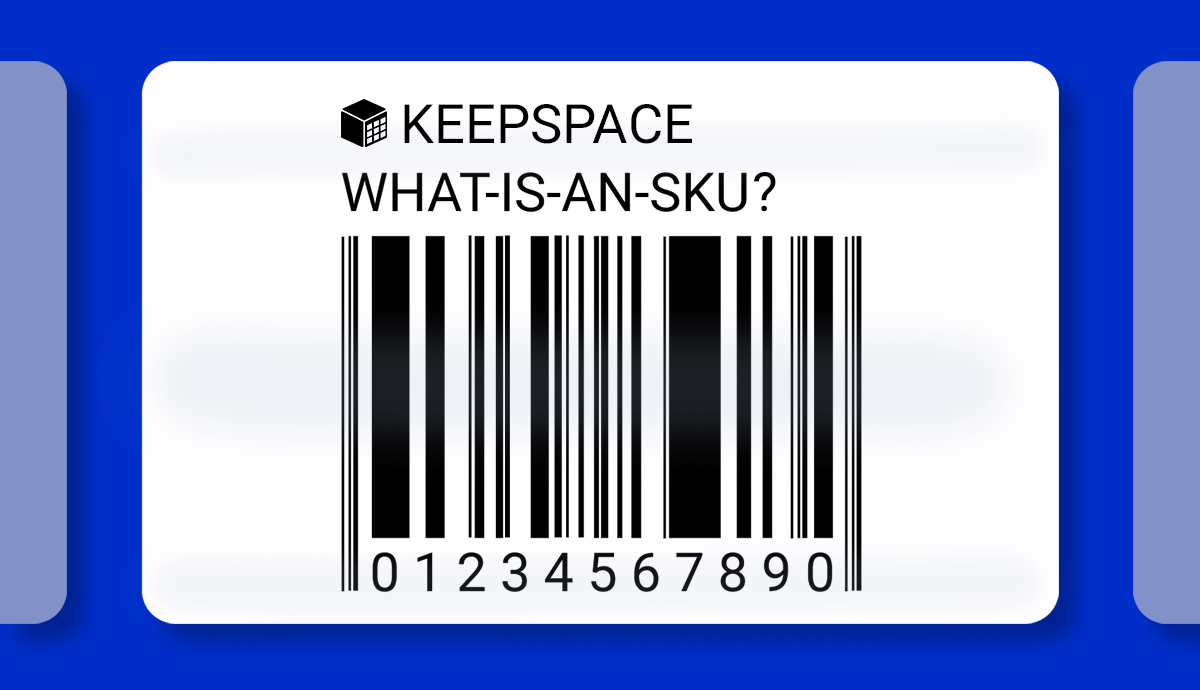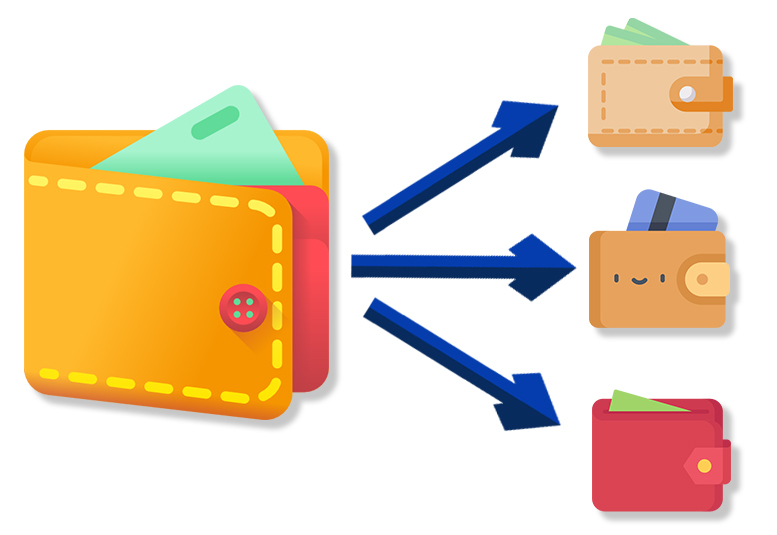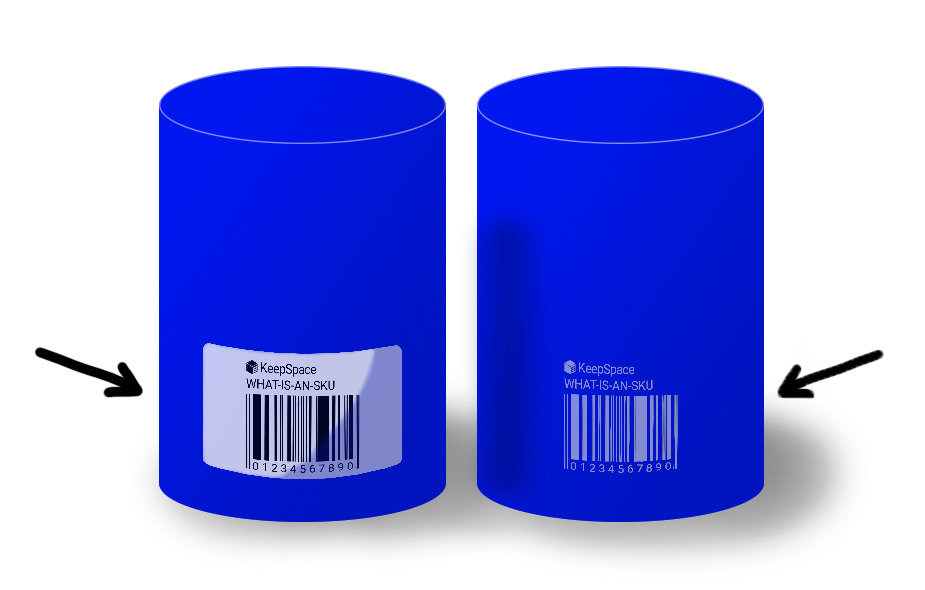
SKU is a common term used in ecommerce, retail and logistics. But, what is an SKU?
SKU (Stock Keeping Unit) is an alphanumeric code that is unique to a product. This allows the business to identify, locate and track their inventory. An SKU should provide information on the most significant characteristics of a product, such as size and colour. You usually see it next to a barcode, and it is different from a UPC or an EAN.
First, let’s look at what makes an SKU, an SKU.
Differences: SKU, UPC and EAN
Here is a brief comparison list between the three types of codes.
SKU (Stock Keeping Unit):
- Length is 8 to 12 characters
- Alphanumeric
- Usually begins with a letter
- Zeros are avoided
- Product traits
- Unique for each company
UPC (Universal Product Code):
- Length is 12 digits
- Numeric only
- Product & Manufacturer info
- Universal
- More preferred in the US and CA
- Issued by Global Standards Organisation
EAN (Europe/International Article Number):
- Length is usually 13 digits (can vary)
- Numeric only
- First 3 digits = company country
- Next 4, 5 digits = owner of the brand
- Remaining digits = product code
- Includes a check digit
- Preferred more in other countries
All three codes are usually beside a barcode. Below is an example of how it may look like.

UPCs and EANs are usually compatible with each other. So, there is less need to prepare each code. However, this can depend on the company. Therefore, it is good to remember the difference if you are aiming for international expansion.
How are SKUs used?
Using an SKU can lead to many benefits in your business.
Raised inventory accuracy
An SKU holds the information of product traits. By creating the SKU code, it is easier to optimise your product catalogue management. This ensures tracking accuracy, which leads to knowing the availability of the product. There are three main benefits.
- Easy stocktakes – ensuring stock levels match between storage and WMS
- Identifying stock shrinkage
- Knowing when to replenish
These all lead up to efficiency and productivity, hence why 3PLs ask you to create them. You will always have your products going in and out in a smooth fashion.
Forecast sales and trends
With raised inventory accuracy, SKUs can help to forecast sales and trends. This means that you can tell which products you need to stock. Your customers will know that you are a reliant merchant that can answer to their needs.
However, it’s not wise to blindly follow the SKU forecast. Important customers may want those slow sellers. If you stop selling them, those customers will go away.
Instead, it’s wise to follow a certain strategy. That is, to consider how customers are purchasing your products. When customers are searching for a product, they likely search for a bundle of attributes.
For example, try to think of the last time when you bought a smartphone. Did you think, “I want smartphone X”? Or, did you think, “I want a smartphone that is this screen size, resolution, price, colour and brand”?
Remember, SKUs represent the product’s traits. Now that you know how to strategically analyse your sales, you can refer to the SKUs to make smart decisions on what products to stock.
Boost customer satisfaction and retention
Now you exactly know the products that your customers want to buy. Since you know which product tends to get high reorder points, you can reduce the frequency of showing ‘out-of-stock’ on your platform.
Customers love the ecommerce experience when out-of-stock occurs rarely. This can lead to increased customer satisfaction, which then leads to customer loyalty (retention).
Let’s say one of your products actually ran out of stock. Once a customer stays loyal to your brand, the customer may be more willing to be patient. Meaning, instead of searching for a different brand, the customer might stay and wait till you re-stock.
You have attained strategic analyses and loyal customers. An SKU can take you one step further.
Let’s go back to the situation where a product is out of stock. Your loyal customers are willing to wait until you re-stock. During that time, you can suggest a different product that is similar to what they want.
How do you do that? Check your SKUs!
Offer new suggestions
Find the SKUs that have most the common characteristics as the prior product that the customers want to buy. Your customers might buy it!
This is especially convenient for your online platform. Try to remember when you clicked on an item. Did that page include a section along with the words, “Recommended for you”? Well, that’s where your site offers new suggestions.
This works based on your SKUs. The platform’s algorithm automatically searches for similar SKU. Then, it presents the products with those similar SKUs.

How to make an SKU
Now that you know the benefits of using an SKU, let’s look at how to make one.
1. Design an SKU architecture
This means that you have to determine what information to decode in numbers and letters.
There are two main steps upon deciding your SKU structure.
First, is determining your product information priorities. Make sure you decide a hierarchy of information based on your company’s needs, sale priorities, and customer profile. This makes it easier for you to decide on what you should include in your SKU.
For example, the colour of the product should be less important than the type of customer (e.g. female, young) your product is for. If your customer checks a product for young women, you can recommend other products for young women. Recommendations through colour won’t be as effective.
Next, is grasping your stock volumes. Let’s say you have stocks of many different products. You would want to make sure that your SKUs won’t mix up.
To avoid that, you need to make your SKU more detailed. Tailor it to the product it is supposed to represent. The more inventory you have, the more detailed the SKU needs to be.
For example, let’s say you have two black T-shirts with different logos. You will need to differentiate your SKU by adding the detail that is different. In this case, it’s the logos.
2. Include only important information
You might think, “We already covered this topic in the previous section!” But wait, there’s one more tip you should know about.
Remember, the goal of using an SKU is to help 3PLs, operations and delivery teams identify what product the SKU is referring to as quickly as possible.
That’s why you only include relevant information. But, you already know that, right? Well, let’s re-word this sentence.
In other words, omit what is obvious or erroneous.
For example, let’s say your ecommerce brand is only selling children’s clothing. Then, there’s no meaning to put in ‘for children (e.g. CH)’ in your SKU. Instead, if your brand handles both adult’s and children’s clothing, that’s when you need to put ‘CH’ in your SKU.
3. Follow your format
Usually, you can format your SKU in any way you want. However, there are some things you should consider when naming your SKU.
- Keep the same order and format for each SKU. (e.g. product type-gender-age-colour/use hyphens between each info, etc.)
- Try to keep it between 8 to 12 characters.
- Always start with a letter, not a number.
- Order info from broad to narrow. (e.g. brand > product type > colour > size)
After making your SKUs according to the format, try listing them in alphabetical order. The SKUs should align in a logical structure. For example, t-shirts will align with t-shirts, shoes will align with shoes.
4. Avoid confusing similarities
This is the last tip for creating a great SKU.
Prevent confusion by avoiding ambiguity and letters that look like numbers.
For example, an ‘I’ may look like a ‘1 (one)’, or an ‘O’ may look like a ‘0 (zero)’.
Also, a capital ‘I’ may look like an under case ‘L (l)’ depending on the font. Therefore, it is always recommended to use capital letters consistently.
The last example is when broader information (e.g. brand or product) starts with the same letter.
Let’s say your retail used to sell Nikes products (with the SKU as ‘N’) and has recently started selling Nerf products as well (while that sounds unlikely). Both of them start with an ‘N’, so now you need to change the coding. (e.g. Nikes = NK, Nerf = NF)
5. Print and record SKU
If you have completed your SKU catalogue, congratulations on completing it!
There’s one more step before you finally obtain the benefits of using an SKU. That is, printing and recording the SKU for your system!
There are three different ways an SKU can be printed for your product. First, is to find a printing company on your own. Second, is to rely on your 3PL to print it for you. Lastly, is to put the SKU into the design of your product package.

Either way, you must attach your SKU to your product. In terms of convenience, the third one may be the best, as the cost and printing are absorbed in the production process.
While you are waiting for the physical versions to come, it’s good to record the SKUs into your management system. Make sure you have input the correct characters, so problems won’t arise later on.
Now you have the source to check your SKUs during your warehouse operations!
Conclusion/Review
We have looked at what is an SKU, and how it can enhance your warehouse operations and order fulfilment.
An SKU (Stock Keeping Unit) is:
- An alphanumeric code that is about 8 to 12 characters long.
- Which usually begins with a letter and zeros are avoided.
- It includes product traits and is unique for each company/product.
An SKU is used to:
- Raise inventory accuracy
- Forecast sales and trends / offer new suggestions
- Boost customer satisfaction and retention
To use an SKU:
- Design an SKU structure
- Include only important information (generate your SKU)
- Follow your format
- Avoid confusing similarities
- Print and record SKU
Looking to outsource?
KeepSpace can help.

